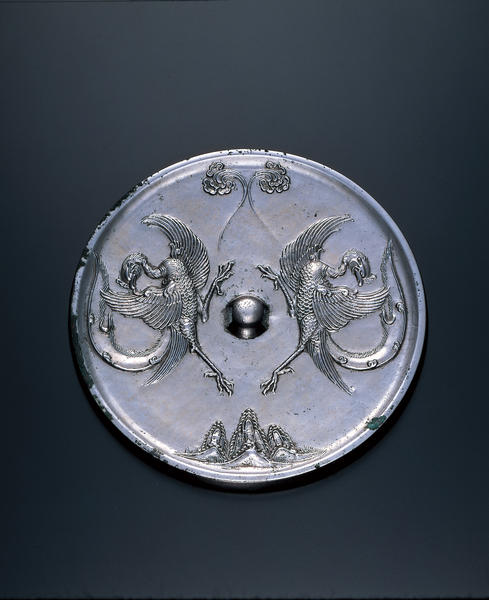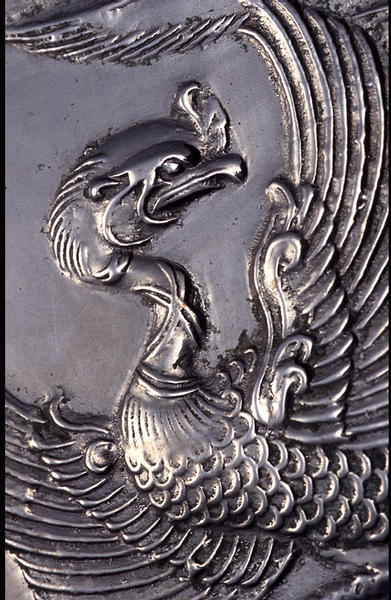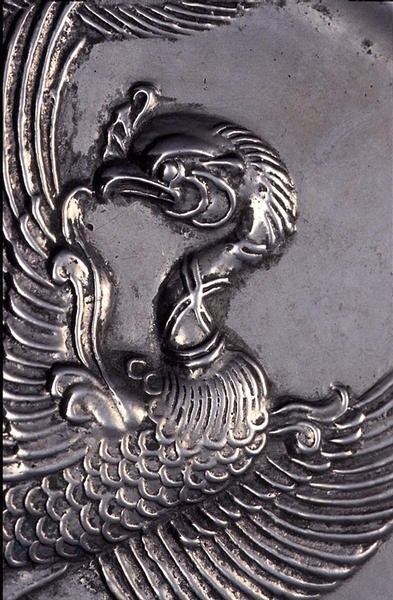Mirror
- China
- China, Tang period
- 8th to 9th centuries
- Bronze
- D-18
Catalogue Entry
The Tang period was one of the great periods of production for mirrors of many types. Mirrors decorated with such "cosmic images" as auspicious creatures, clouds, and sacred mountains were "considered tools for reflecting the powers of the cosmos."1 Among the most popular auspicious creatures depicted on mirrors was the phoenix (fenghuang), a mythical bird depicted with an elaborate tail, crest, and a body like that of a peacock. Phoenixes have a long history in ancient Chinese lore. They are mentioned in Bronze Age oracle bone inscriptions,2 and represented even earlier on Neolithic period jades.3 Ultimately, a pair of phoenix images, one representing the cock (feng) and the other the hen (huang), came to symbolize benevolence in a ruler.4 Although associated with the Daoist desire for paradise and immortality, the phoenix in early China does not have the same connotations with resurrection and rebirth that it does in Western mythology.
The back of this mirror is decorated in relief with two vertically striding phoenixes flanking a central boss. Above are two symmetrically placed "cloud-spirit" motifs (yunqi) that represent the mystical vital force of the cosmos. Below is the image of a three-peaked mountain that symbolizes one of the many sacred mountains where the immortals in the Chinese Daoist pantheon were thought to abide. Such three-peaked mountain motifs can be traced back to the Han period (206 B.C.-A.D. 220), when they decorated other objects as well as mirrors.5
The Shumei mirror was probably cast in a two-piece mold from an alloy of copper, tin, and lead, described in Han mirror inscriptions as the "three auspicious metals" for making mirrors.6 The silvery colored reflecting surface of the mirror was probably the result of natural patination mechanisms, not the result of either intentional silver or tin plating.7
HI
1. Munakata 1990, p. 91.
2. Chang 1983, pp. 56, 68, 74.
3. Kaogu xuebao 1994.2, p. 226, fig. 23.15; pl. 8.1.
4. For the significance of phoenix images, see Powers 1991, pp. 237-42.
5. For a discussion of cloud and mountain images see Munakata 1990, pp. 20-34, 98-101.
6. Karlgren 1934.
7. Meeks 1993.


